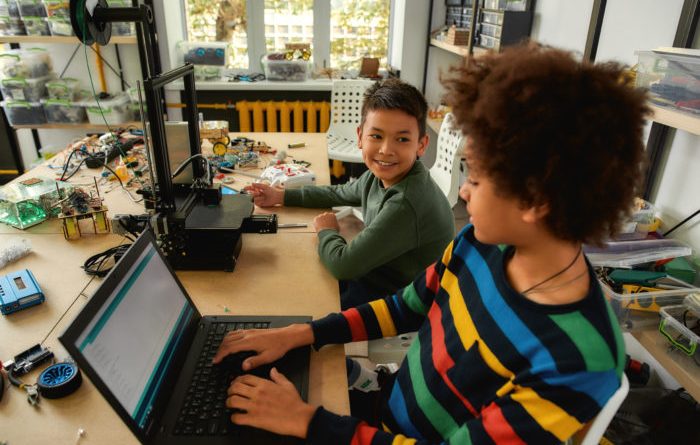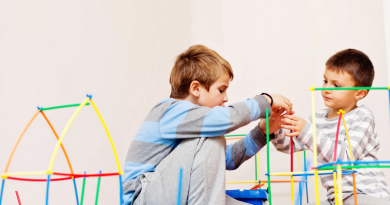3 ways ed-tech is ensuring student-centered learning thrives after COVID
A third of school systems surveyed intend to launch a full-time virtual school in COVID’s wake
The future of education post-COVID may be less about a return to physical classrooms and more about instructing students in the ways they learn best while meeting the evolving needs of teachers.
Overcoming large-scale challenges such as academic acceleration and teacher burnout will require capitalizing on new approaches that have gained momentum during the pandemic, says the “Carpe Diem” report from the Christensen Institute, a think tank that studies disruptive ideas across industries and the public sector.
These approaches include blending learning models such as flipped learning, station and lab rotation, and flex methods, according to the 1,000-plus educators interviewed for the report, says its author, research fellow Thomas Arnett.
For example, while 12% of the educators surveyed by the Christensen Institute reported using flipped classrooms prior to the pandemic, 18% expect to use it post-COVID.
The report also urges administrators not to rush to put online learning behind them as a third of school systems surveyed intend to launch a full-time virtual school.
Other districts also plan to expand support for the learning hubs families formed during the pandemic. These small groups of students learn together in person, often at a home, while participating in the remote instruction offered by their school districts.
Teachers also reported becoming more comfortable with using learning management systems to deliver and design online lessons. This will allow educators to collect more useful data on student progress, the survey found.
The report details three big-picture strategies administrators can use to leverage the lessons and new technologies of the pandemic to transition to more student-centered learning:
Strategy 1: Empower teachers to make their classrooms more student-centered
“A teacher’s newfound familiarity with the tools for facilitating online instruction can provide footholds along the climb to student-centered practices,” the report says.
During the big shifts of the pandemic, more teachers learned to create digital assignments and quizzes and developed libraries of online and recorded lessons. This is a key step in allowing students to work independently on different assignments, at their own pace and outside of class hours.
This lays the groundwork for flipped classrooms and flex models. In the former, teachers focus in-person time on discussions, practice problems and collaboration on projects while students learn foundational content independently. The latter allows students to guide themselves through while demonstrating mastery of learning objectives.
The report cautions that online learning is not inherently student-centered. Educators must create a vision for how ed-tech will give students more independence.
“With these instructional models in place, teachers can enjoy spending more time where they’re needed the most—building relationships with students, identifying students’ learning needs,
providing individualized support, sharing their passion for the content they teach, and orchestrating deeper learning experiences,” the report says.
Strategy 2: Help schools make bold shifts to student-centered learning
In Wisconsin, the Kettle Moraine School District’s student-centered “Learning Without Boundaries” initiative allows teachers to leverage online learning to identify students’ academic needs and personalize learning experiences. This initiative was launched well before COVID, but it can serve as a model for how the pandemic can be a catalyst for innovation, the report says.
“At this moment, as conventional instruction strains under remote and hybrid learning arrangements, some leaders may seize this rare opportunity to call out the shortcomings of conventional instruction and rally their staff and communities around a student-centered vision for education,” the report says.
Change will be smoother in districts where the community has recognized the limits of conventional instruction, where flexibility and growth mindset are a part of a district or school’s culture, and where leaders have established trust with teachers, staff and parents.
Strategy 3: Invent new student-centered programs by pairing virtual schools and supplemental online courses with learning hubs
Leaders who face stiff opposition to overhauling instructional models have other alternatives to expand student-centered learning. Virtual schools, supplemental online courses and learning hubs or pods developed during the pandemic can give students more independence.
“These new programs benefit from not having organizational histories that wed them to entrenched processes,” the report says. “They offer blank slates for designing student-centered learning from the ground up.”
Virtual schools and supplemental online courses paired with learning pods will provide flexibility this school year for families who still feel uncomfortable sending children back to a conventional school.
“Even after the pandemic ends, we encourage school systems to continue offering virtual schooling and online course options paired with learning hubs or pods,” the report says. “These programs can be laboratories for incubating whole-school models for student-centered learning.”
Source: https://districtadministration.com/3-ways-ensure-student-centered-learning-outlasts-pandemic-ed-tech/




